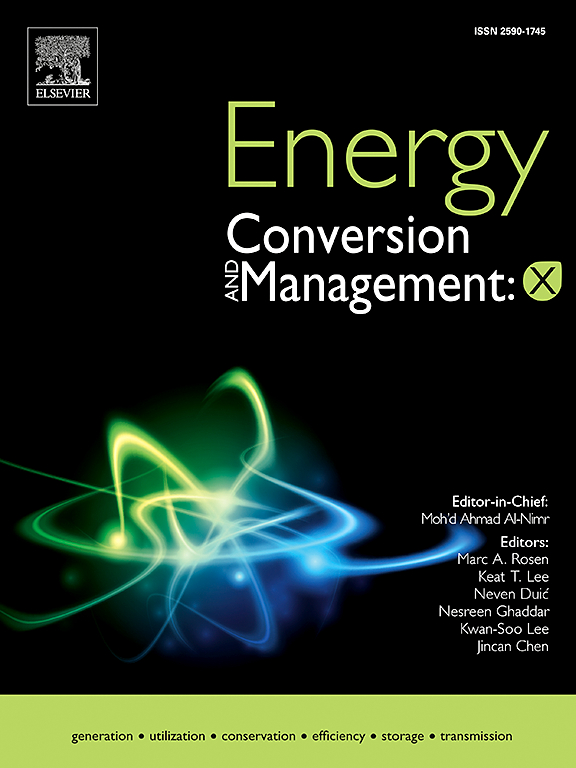Thermal barrier performance of natural fiber-reinforced biocomposite panels with the reflective surface for conserving heat energy in buildings
IF 7.1
Q1 ENERGY & FUELS
引用次数: 0
Abstract
This study investigates the thermal barrier properties of fiber-reinforced composites with heat reflective surfaces for building applications. Biocomposites made of natural cotton fiber with white and four distinct colors, such as red, yellow, blue, and black, were developed employing a compression molding technique. Among the studied composites, the white cotton composite owing to reflective surface has the lowest thermal conductivity of 0.0687 W/m·K, which was the maximum for its black counterpart with the value of 0.0823 W/m·K. The white composite, in contrast, exhibited higher conductive heat resistance (0.0582 m2·K/W) than the black ones (0.04862 m2·K/W). The evaluation of the radiative heat resistance using an incandescent lamp and sunlight showed the superior resistance of white composite to radiant heat transfer due to its high reflectance of electromagnetic radiation, making it an effective reflector and heat insulator material for thermal energy conservation. Additionally, the thermogravimetric analysis revealed adequate thermal stability with a similar trend in the degradation pattern of composites at elevated temperatures, confirming a negligible impact of color on thermal stability. The overall outcomes of this study suggest fiber-reinforced composites with reflective (white) surfaces can considerably resist the transfer of conductive and radiative heat than colored cotton materials and, therefore, can be employed as better heat-insulating panels in buildings for lowering thermal loads to maintain favorable indoor temperature.

求助全文
约1分钟内获得全文
求助全文
来源期刊

Energy Conversion and Management-X
Multiple-
CiteScore
8.80
自引率
3.20%
发文量
180
审稿时长
58 days
期刊介绍:
Energy Conversion and Management: X is the open access extension of the reputable journal Energy Conversion and Management, serving as a platform for interdisciplinary research on a wide array of critical energy subjects. The journal is dedicated to publishing original contributions and in-depth technical review articles that present groundbreaking research on topics spanning energy generation, utilization, conversion, storage, transmission, conservation, management, and sustainability.
The scope of Energy Conversion and Management: X encompasses various forms of energy, including mechanical, thermal, nuclear, chemical, electromagnetic, magnetic, and electric energy. It addresses all known energy resources, highlighting both conventional sources like fossil fuels and nuclear power, as well as renewable resources such as solar, biomass, hydro, wind, geothermal, and ocean energy.
 求助内容:
求助内容: 应助结果提醒方式:
应助结果提醒方式:


